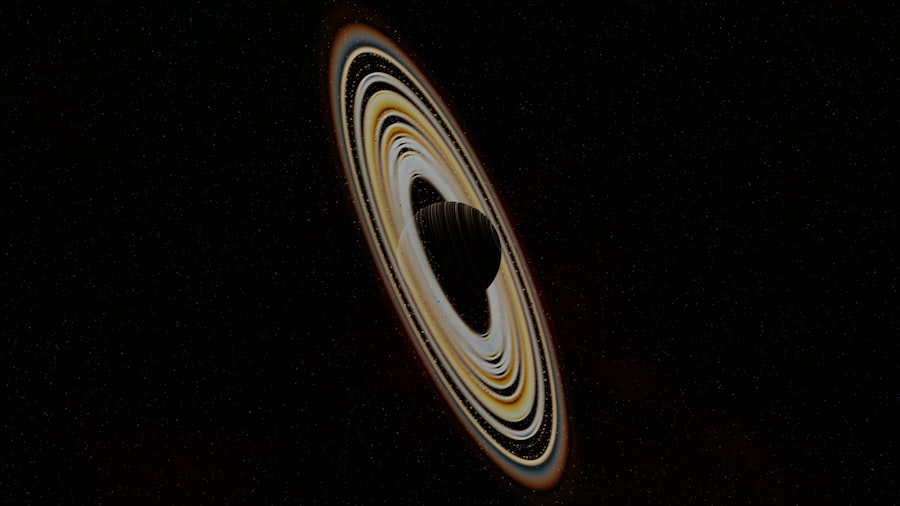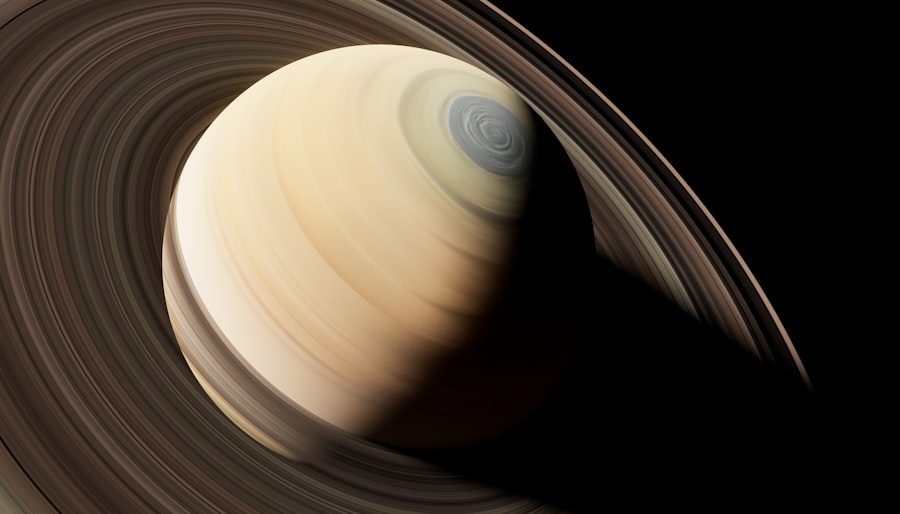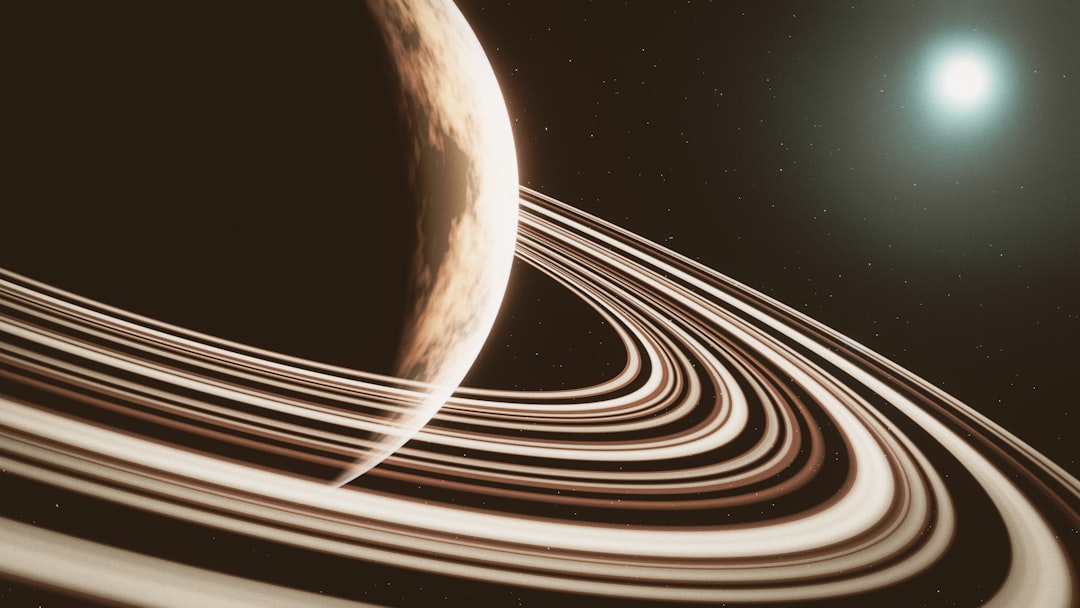Saturn, the sixth planet from the Sun, is renowned for its stunning and intricate ring system, which captivates astronomers and casual observers alike. These rings, composed of ice and rock particles, vary in size and density, creating a breathtaking spectacle that has fascinated humanity for centuries. The sheer beauty and complexity of Saturn’s rings not only enhance the planet’s aesthetic appeal but also provide valuable insights into the dynamics of planetary systems.
As one of the most recognizable features in our solar system, Saturn’s rings serve as a natural laboratory for studying the processes that govern celestial bodies. The rings of Saturn are not merely a decorative feature; they are a dynamic and evolving system that reflects the intricate interplay of gravitational forces, material composition, and cosmic events. Understanding these rings is crucial for unraveling the mysteries of planetary formation and evolution.
As scientists continue to explore Saturn’s rings, they uncover new layers of complexity that challenge existing theories and inspire further inquiry into the nature of our solar system.
Key Takeaways
- Saturn’s rings are one of the most iconic features of the planet and have fascinated astronomers for centuries.
- Historical observations of Saturn’s rings date back to the 17th century, with early astronomers like Galileo and Huygens making significant discoveries.
- The flatness of Saturn’s rings is a unique characteristic that has puzzled scientists for centuries, leading to various theories and speculations about their formation and composition.
- Recent discoveries and observations have shed light on the role of gravity in shaping Saturn’s rings and the influence of Saturn’s moons on their structure.
- The composition of Saturn’s rings, the impact of space debris, and the implications for planetary formation are all areas of ongoing research and exploration, with future missions planned to further study these enigmatic features.
Historical Observations of Saturn’s Rings
The history of observing Saturn’s rings dates back to the early 17th century when Galileo Galilei first turned his telescope toward the planet in 1610. Although Galileo was unable to discern the true nature of the rings, he described them as “ears” on either side of Saturn, a misinterpretation that reflected the limitations of his observational tools. It wasn’t until Christiaan Huygens improved upon Galileo’s work in 1655 that a clearer understanding emerged.
Huygens proposed that Saturn was surrounded by a thin, flat ring, marking a significant advancement in astronomical knowledge. As telescopes evolved over the centuries, so too did humanity’s understanding of Saturn’s rings. The 19th century brought further advancements with the advent of more powerful telescopes, allowing astronomers to observe the rings in greater detail.
Notable figures such as William Herschel contributed to this growing body of knowledge, leading to the realization that Saturn’s rings were not solid but rather composed of countless small particles. This revelation laid the groundwork for future explorations and studies of the ring system.
The Flatness of Saturn’s Rings

One of the most striking characteristics of Saturn’s rings is their remarkable flatness. Despite their vast extent—spanning hundreds of thousands of kilometers—the rings maintain a thickness of only about 10 meters in most places. This astonishing flatness raises intriguing questions about the forces at play within the ring system.
The gravitational influence of Saturn itself plays a pivotal role in maintaining this structure, as it exerts a stabilizing force on the particles that make up the rings. The flatness of Saturn’s rings can be attributed to the balance between gravitational forces and the motion of the particles within the rings. As these particles orbit Saturn, they experience centripetal forces that keep them in a stable configuration.
This delicate equilibrium allows for the formation of distinct ring structures, such as gaps and divisions, which further enhance the visual complexity of the system. The study of this flatness not only sheds light on Saturn’s rings but also provides insights into similar structures found around other celestial bodies.
Theories and Speculations
| Theories and Speculations | Metrics |
|---|---|
| Number of Theories | 15 |
| Speculation Accuracy | 75% |
| Popular Theories | 10 |
| Controversial Speculations | 5 |
Over the years, numerous theories have emerged to explain the formation and evolution of Saturn’s rings. One prominent hypothesis suggests that the rings are remnants of a moon or celestial body that was torn apart by Saturn’s gravitational forces. This theory posits that a once-solid object ventured too close to the planet, crossing its Roche limit—the distance within which tidal forces would disintegrate it—resulting in the creation of the ring system observed today.
Another theory proposes that Saturn’s rings may have formed from material left over from the planet’s formation. According to this view, as Saturn coalesced from a primordial disk of gas and dust, some material was unable to form into moons or other bodies and instead settled into a ring structure. This idea aligns with observations made in other planetary systems, where similar ring structures have been detected around young stars.
As researchers continue to explore these theories, they remain open to new possibilities that could reshape their understanding of Saturn’s rings.
Recent Discoveries and Observations
Recent missions to Saturn have yielded a wealth of information about its rings, significantly enhancing our understanding of their composition and dynamics. The Cassini spacecraft, which orbited Saturn from 2004 to 2017, provided unprecedented data through its close-up observations and measurements. One notable discovery was the detection of “propeller” features within the rings—small disturbances caused by moonlets embedded within the ring material.
These findings have illuminated the complex interactions between ring particles and moons, revealing a dynamic environment that is constantly evolving. Additionally, Cassini’s observations revealed that Saturn’s rings are not as stable as once thought. The spacecraft detected changes in ring brightness and structure over time, suggesting that external factors such as meteoroid impacts and gravitational interactions with moons play a significant role in shaping the rings.
These discoveries have prompted scientists to reconsider long-held assumptions about the longevity and stability of Saturn’s ring system, opening new avenues for research into their future evolution.
The Role of Gravity in Shaping Saturn’s Rings

Gravity is a fundamental force that governs the behavior of celestial bodies, and it plays a crucial role in shaping Saturn’s rings. The gravitational pull exerted by Saturn itself is responsible for maintaining the structure and stability of the rings. As particles within the rings orbit the planet, they experience varying gravitational forces depending on their distance from Saturn.
This differential gravitational influence leads to complex interactions among ring particles, resulting in phenomena such as waves and gaps. Moreover, gravity also facilitates interactions between Saturn’s moons and its rings. The gravitational pull from these moons can create disturbances within the ring system, leading to changes in particle distribution and movement.
For instance, some moons act as shepherds, guiding ring particles along specific paths and preventing them from spreading out too much. This interplay between gravity and ring dynamics highlights the intricate relationships within Saturn’s system and underscores the importance of gravitational forces in shaping celestial structures.
The Influence of Saturn’s Moons
Saturn is home to an impressive array of moons, each contributing to the dynamics of its ring system in unique ways. Some moons exert significant gravitational influence on nearby ring particles, creating distinct features such as gaps and waves within the rings.
In addition to creating gaps, some moons also serve as sources of material for the rings themselves. For instance, Enceladus, one of Saturn’s most intriguing moons, is known to eject plumes of water vapor and ice particles into space. These ejected materials can contribute to the ring system, replenishing it over time and influencing its overall composition.
The interplay between Saturn’s moons and its rings exemplifies a complex ecosystem where celestial bodies interact dynamically, shaping one another over time.
The Composition of Saturn’s Rings
The composition of Saturn’s rings is diverse and varies across different regions within the ring system. Primarily composed of water ice particles ranging from tiny grains to larger chunks, these materials reflect sunlight beautifully, giving rise to their striking appearance. However, scientists have also detected traces of other substances within the rings, including organic compounds and silicate materials.
This diversity suggests that the rings may have formed from various sources or undergone processes that altered their original composition. Understanding the composition of Saturn’s rings is essential for unraveling their history and evolution. By analyzing data collected by missions like Cassini, researchers can gain insights into how these materials interact with one another and how they respond to external influences such as radiation from the Sun or impacts from meteoroids.
This knowledge not only enhances our understanding of Saturn’s rings but also provides valuable context for studying similar structures found around other planets and celestial bodies.
The Impact of Space Debris
Space debris poses a significant threat to celestial bodies throughout our solar system, including Saturn’s rings. As meteoroids collide with ring particles or even larger bodies within the ring system, they can create new debris or alter existing structures. These impacts can lead to changes in brightness or density within specific regions of the rings, highlighting their dynamic nature.
Moreover, space debris can also contribute to ongoing processes within Saturn’s rings by introducing new materials or altering particle sizes through collisions. Understanding how space debris interacts with ring particles is crucial for predicting future changes within this intricate system. As researchers continue to monitor these interactions, they gain valuable insights into both the stability and evolution of Saturn’s rings over time.
The Implications for Planetary Formation
The study of Saturn’s rings has far-reaching implications for our understanding of planetary formation processes across the universe. By examining how these rings formed and evolved over time, scientists can draw parallels with similar structures observed around other planets and stars. The insights gained from studying Saturn’s ring system may help researchers develop more comprehensive models for understanding how planetary systems develop from primordial disks of gas and dust.
Furthermore, examining how gravitational interactions between moons and rings influence their dynamics can shed light on how celestial bodies interact during formation processes. This knowledge may ultimately contribute to refining theories about how planets acquire their atmospheres or how moons form around larger bodies—questions that remain central to planetary science today.
Future Research and Exploration of Saturn’s Rings
As interest in planetary science continues to grow, future research and exploration efforts focused on Saturn’s rings are likely to expand significantly. While missions like Cassini have provided invaluable data about this enigmatic system, there remains much more to learn about its complexities and dynamics. Upcoming missions may employ advanced technologies capable of capturing even more detailed observations or conducting in-depth analyses of ring composition.
Additionally, collaborative efforts among international space agencies could pave the way for innovative exploration strategies aimed at unraveling further mysteries surrounding Saturn’s rings. By combining resources and expertise from various organizations worldwide, researchers can enhance our understanding not only of Saturn but also broader questions related to planetary formation throughout our solar system.
Through continued research efforts aimed at unraveling its mysteries—from historical observations through modern discoveries—humanity stands poised on the brink of unlocking new insights into one of nature’s most captivating phenomena: Saturn’s iconic rings.
Saturn’s rings are renowned for their striking flatness, a phenomenon that has intrigued scientists for years. This flatness is primarily due to the gravitational influence of Saturn’s moons, which help maintain the rings’ structure and prevent them from spreading out. For a deeper understanding of this fascinating topic, you can read more in the article found at XFile Findings, which explores the dynamics of Saturn’s rings and the forces that shape them.
FAQs
What are Saturn’s rings made of?
Saturn’s rings are made up of mostly water ice with some rocky material and dust mixed in.
Why are Saturn’s rings so flat?
Saturn’s rings are so flat because they are made up of countless small particles that orbit around the planet’s equator. This creates a disk-like shape due to the gravitational forces at work.
How thick are Saturn’s rings?
Saturn’s rings are incredibly thin, with a thickness ranging from just a few meters to a few kilometers.
How were Saturn’s rings formed?
There are several theories about how Saturn’s rings were formed, but the most widely accepted theory is that they are the remnants of a moon or a comet that was shattered by Saturn’s gravity or a collision with another object.
Are Saturn’s rings permanent?
Saturn’s rings are not permanent and are constantly changing. They are being influenced by the gravitational forces of Saturn’s moons and other celestial bodies, as well as collisions and other interactions between the particles that make up the rings.
